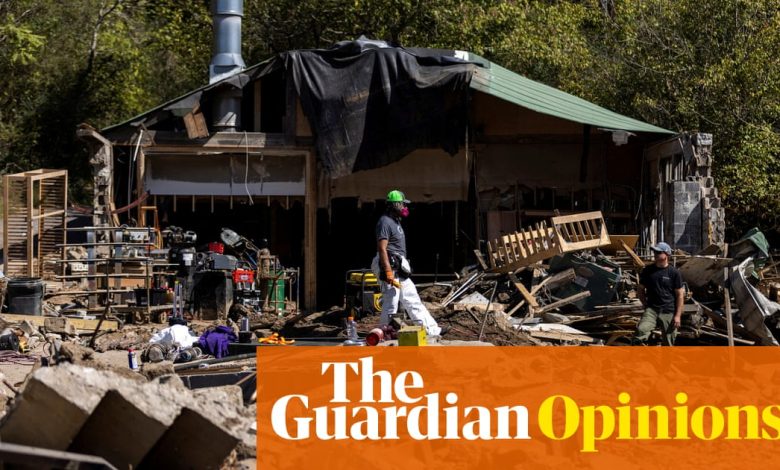What is the real toll of natural and climate disasters? Science has staggering new answers | Devi Sridhar

Tthe devastation of hurricanes, earthquakes, tsunamis or tornadoes is often conveyed by how many people are injured or killed. And based on that we assess “how bad was it really?” for example, the recent hurricane season in the Atlantic Ocean killed nearly 300 people in the United States and the Caribbean, with Helen killing at least 228 people. These deaths are usually due to flooding of houses and resulting drownings, injuries caused by building collapses, or loss of emergency medical care.
But new research challenges us to view these disasters as larger-scale events that have lasting effects for decades after they strike—whether from stress, financial hardship, pollution or long-term illness. A a new paper in the journal Nature develops a methodology to estimate the overall effect of individual tropical cyclones (ie, hurricanes and tropical storms) on all-cause mortality among all US populations. The authors analyzed how death rates in a state changed over 20 years after the state was hit by a natural disaster, and took death data from 1950 to 2015 to form a longer-term picture.
Their main finding was that a large number of premature deaths in the US could be traced to tropical cyclone events: people who died earlier than would be expected in the absence of a natural disaster. For example, looking at the direct casualties of tropical cyclones shows that each one killed an average of 24 people. But extending this to indirect deaths results in an average of 7170-11430 for each event. These indirect early deaths were relatively higher among people under the age of 44 and among blacks.
The paper in Nature is notable because it is the first systematic attempt to look at hundreds of events we might call “natural disasters” and try to capture the full impact in terms of deaths over decades. Although the study focused on hurricanes and similar storms in the U.S., this type of methodology can be used to study the long-term health impacts of other disasters, from climate floods to heat waves, and can even be extended to understand indirect health impacts of any type of societal shock – whether natural disaster or conflict.
For those of us working in global public health, the results are not surprising. Case studies of natural disasters show the long-term impact on disease and death. For example, in 2010 Category 7 earthquake hits Haiti. The immediate death toll is estimated to range from 100,000 to 160,000 people. An international echo was mounted, but with that came the cholera. Genetic sequencing showed that UN peacekeepers likely brought the disease and that it spread rapidly amid broken water and sewage systems.
The outbreak resulted in nearly 800,000 Haitians becoming infected with cholera and more than 9,000 deaths, and took until February 2022. – almost 12 years later – to declare the country cholera free. Haiti faces numerous other long-term consequences of the earthquake, including poor housing and infrastructure and weak to non-existent medical systems, all under multiple failed governments. Although we know that such severe conditions will affect people’s health, it has been difficult to make a direct link to an event and assess its impact.
Another example is the 2004 Boxing Day tsunami, which was triggered by an earthquake in Indonesia. Massive waves up to 100 feet high hit nearby countries like Sri Lanka. The direct charge is estimated at approx 230,000 peoplemaking it the deadliest natural disaster of the 21st century (so far). Reflecting 14 years later on the impact, Matilda Shannonstudying disaster management at the University of Manchester, noted the gender impact of the tsunami, including an increase in girls leaving school to take on the roles of their mothers who died in the tsunami, an increase in child marriage as families recover economically, pressures of young girls to reproduce to replace the children who died in the tsunami and reinforces discrimination against girls.
By systematically analyzing hundreds of events, we can supplement these case-by-case examples. We called them as “uncounted” dead in outbreaks: those who die not directly because of a disease like Ebola, but because of the shutdown of health services and public health. Perhaps this concept can also be used to calculate the true toll of natural disasters.
We are used to thinking of natural disasters as events limited in time and space: the direct impact of an earthquake in a particular place occurs in minutes, a hurricane in hours. Although they may be limited in geography, longitudinal studies can help us understand the full range of effects and what additional efforts may be needed for recovery.
And as the climate crisis increases the number and severity of disasters like hurricanes and heat waves, we need to know the true scale of the devastation. Both to warn the public that danger and harm continue long after the sudden shock of a disaster, and to enable governments to plan for long-term impacts and develop policies that can save lives in the aftermath.




